Femia > Health Library > Your cycle > Health > Hyperovulation: You can ovulate twice in a month
Hyperovulation: You can ovulate twice in a month
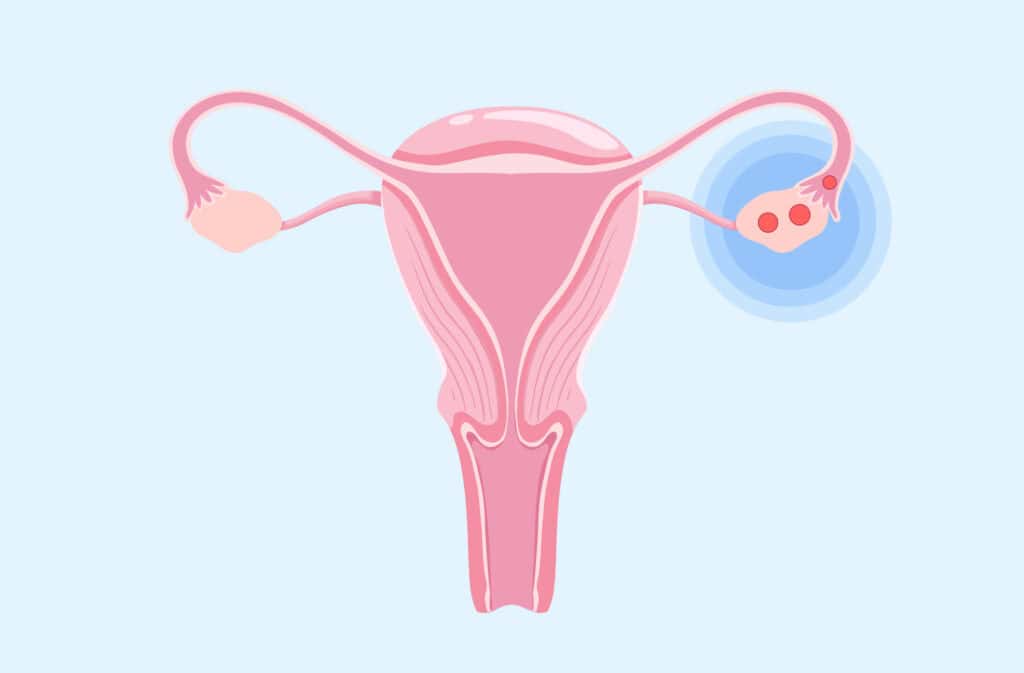
- Updated Feb 28, 2025
- Published
CRAFTED BY HUMAN
Crafted by human At Femia, we provide accurate and up-to-date information at every stage of your journey, from trying to conceive, pregnancy and postnatal support. All content is created by a real person based on in-depth research and own professional experience. Femia ensures that you will receive expert advice, strict accuracy and a personalized approach from our authors/medical experts. Learn more about our editorial policy.
FACT CHECKED
Fact checked At Femia Health, we maintain the highest standards of editorial excellence in delivering content focused on helping you conceive, guiding you through pregnancy, and supporting you postpartum. Explore our content review principles to learn how we ensure the accuracy and quality of our health and lifestyle tips for every stage of your journey.
- Hyperovulation occurs when multiple eggs are released during a single menstrual cycle.
- It’s relatively uncommon but can be influenced by genetics, age, diet, and fertility treatments.
- Symptoms are similar to regular ovulation, including changes in cervical mucus, mild abdominal pain, and a slight rise in body temperature.
- While it can boost conception chances, it also increases the risk of twin or fraternal pregnancy.
If you are trying to conceive, tracking your ovulation patterns and recognizing hyperovulation can be a game-changer that increases your chance of pregnancy.
Hyperovulation can enhance your fertility window and boost the chances of twin or multiple pregnancies. You can recognize hyperovulation by tracking your ovulation days through various methods or by going for an ultrasound.
If you are trying to conceive and want to understand or recognize ovulation and hyperovulation, you’ve come to the right place. We’ve got you covered.
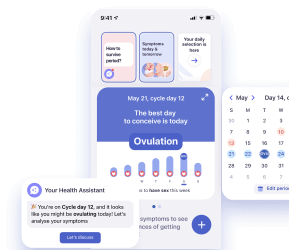
What is hyperovulation?
Hyperovulation is a process or condition in which one or both of your ovaries release more than one egg within a single menstrual cycle.
On average, when a man ejaculates during sexual intercourse, he releases nearly 300 million sperm. In contrast, most women release a single egg during ovulation. It only takes one healthy sperm to fertilize that egg and result in pregnancy.
But when more than one egg is released during hyperovulation, both eggs have the potential to be fertilized. When two different spermatozoa fertilize two different eggs, fraternal twins are conceived.
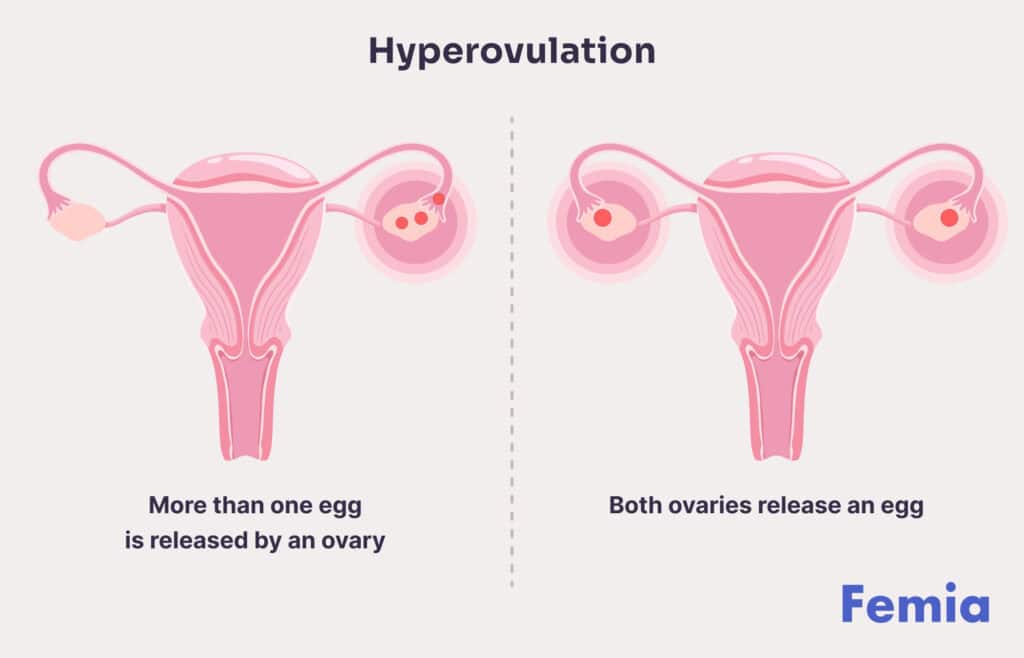
How common is hyperovulation?
Studies show that between 1980 to 1985 and 2010 to 2015, the rate of fraternal twins increased due to a variety of factors including a trend toward older mothers and the use of specific fertility medications.
One of the primary reasons for the increase in twin and even triplet pregnancies was the use of assisted reproductive technology (ART).
👉Find out more: How to improve egg quality: Tips for boosting fertility at any age
Can you ovulate twice in a month?
So, is it possible to ovulate twice, or can you ovulate more than once a month? Many people wonder whether it’s possible to ovulate twice in a month. Let’s first review the usual process for ovulation.
Normally, a single LH surge or an increase in luteinizing hormone (LH) occurs before ovulation. This hormone comes from the pituitary gland in the brain and affects the ovary.
But it’s also possible to experience multiple surges or a very long LH surge in your monthly menstrual cycle, which may result in a positive ovulation test twice in one month. This can give you a false impression that you are ovulating more than once a month.
However, the actual process of ovulation, which includes the release of an egg from the ovary, commonly occurs once per cycle.
Less commonly, a second or third peak in luteinizing hormone can increase the chances of multiple ovulation or hyperovulation during a single ovulatory cycle. Or, it may be that two developing eggs (called follicles) respond to the same single LH surge, causing a release of two eggs at the same time. The eggs can either be released from the same ovary or one can be released from each ovary.
How do you differentiate hyperovulation from other conditions? Hyperovulation symptoms
The symptoms of hyperovulation are subtle and so similar to regular ovulation that they often go unnoticed.
In order to successfully identify hyperovulation, specific diagnostic tests are required. For example, your healthcare provider may conduct ultrasounds to monitor for multiple ovarian follicles before ovulation and check hormone levels like FSH and LH levels. While an excessive increase in these hormones can be a sign of hyperovulation, they can just as easily be symptoms of normal ovulation.
We recommend using caution when trying to determine if you are hyperovulating based on physical symptoms. These symptoms can also point to other fertility-related conditions.
To rule out these possibilities, you can consider asking your doctor about tests for the following conditions:
- PCOS (polycystic ovarian syndrome);
- Hormonal imbalances or disorders, like pituitary gland issues or thyroid disorders;
- Ovarian hyperstimulation syndrome.
Some hyperovulation symptoms or double ovulation symptoms may include:
1. Changes in cervical mucus. Cervical mucus may change to become wetter or stretchier, with increased amounts of clear or white discharge three to four days before hyperovulation.
2. Pelvic or abdominal pain. Some women may experience increased pain, bloating, or cramps in one side of the abdomen during or around the time of hyperovulation.
4. Light spotting. Although it is rare, some women may experience light bleeding or spotting during hyperovulation.
5. Breast changes or pain. Another symptom of hyperovulation can be breast changes or tenderness and pain.
6. Increased sex drive. You may experience an increased sex drive during ovulation or hyperovulation.
👉Find out more: Can Mucinex help you get pregnant? How to use it for better fertility
Factors that influence hyperovulation
The factors that may influence hyperovulation or might increase the odds of having multiples include:
1. Genetics
The most common factor that can influence hyperovulation is genetics. If your close relatives, like your parents or siblings, had a twin pregnancy, you are twice as likely to conceive fraternal twins through hyperovulation.
However, it’s not necessary that if your close relative has twins, you will also conceive fraternal twins. It’s just that the likelihood of twins or hyperovulation increases if it’s in your family. Some couples may have twins even without anyone in their family with twins.
2. Age
The chances of hyperovulation increase with age. As your age progresses, your hormonal levels fluctuate, and follicle-stimulating hormones (FSH) may increase. An increased level of FSH stimulates the ovaries to produce more eggs, resulting in hyperovulation.
3. Diet
Diet is another factor that can stimulate hyperovulation. For example, certain foods, especially a high-fat diet enriched with sugar, carbohydrates, and unhealthy fat, can lead to insulin resistance and increase androgen levels, boosting the chances of hyperovulation.
4. Fertility treatments
Certain fertility treatments done to induce ovulation, like clomiphene citrate (clomid) or in-vitro fertilization (IVF), can also lead to hyperovulation.
5. Previous pregnancy
Another factor that increases the chances of having multiples is your previous pregnancy history. If you conceived twins in your last pregnancy, there is a likelihood that you will conceive them again.
6. Weight
Being overweight or obese also increases the odds of twin pregnancy. A cohort study of 524,845 live and stillbirths showed that fraternal twin pregnancy was highest in women with BMIs between 25 and 30.
7. Ethnicity
Hyperovulation resulting in fraternal twins is more common in black people as compared to whites. Research shows that throughout decades, twin pregnancy has remained higher in black women.
Hyperovulation and multiple pregnancies
Hyperovulation has both benefits and risks.
Benefits: As more than one egg may be released during hyperovulation, it increases the chances of conception. Its most obvious advantage is the possibility of twins or multiples, which can complete your family in one go!
Risks: The risks of a non-identical twin pregnancy can include preterm births, low birth weight, health issues for moms, like gestational diabetes or hypertension, or the chances of a C-section.
Luckily, there are multiple ways to reduce the risks or complications of a twin pregnancy, like:
- Regular prenatal check-ups;
- Maintaining a healthy diet, weight, and exercise routine;
- Receiving specialized care from healthcare professionals experienced in handling multiple pregnancy cases;
- Prioritizing rest and practicing stress reduction techniques, like counseling, exercise, or engaging in activities that bring you joy.
Hyperovulation after miscarriage
Some women worry about the chances of pregnancy after miscarriage. Did you know that hyperovulation or ovulation is possible as early as two weeks after you experience a miscarriage?
But the question is should you wait after a miscarriage to try for a pregnancy?
The World Health Organization (WHO) recommends waiting for six months after pregnancy loss for getting pregnant. However, there is no data that supports or recommends waiting for any particular time to get pregnant after a miscarriage.
In fact, studies show that the uterus is more susceptible to conception after an early pregnancy loss.
When to see a doctor
You should consult your doctor if you notice or experience any unusual symptoms. For example:
- Severe pelvic pain;
- Heavy bleeding or light spotting that happens before your period is due or after your period has ended;
- Irregular menstrual cycle;
- If you are experiencing difficulty conceiving;
- If you have symptoms of hormonal imbalance, like excess hair growth, weight changes, or acne;
- If you are unsure about your symptoms or have any concerns about your reproductive health or fertility.

Questions from the Femia community
Can I have hyperovulation in every menstrual cycle?
It's very uncommon to experience hyperovulation in every menstrual cycle as this is an infrequent (sporadic) event. Some women may experience hyperovulation more than one time due to a combination of genetic and age factors or fertility treatments, but having hyperovulation in every menstrual cycle is nearly impossible.
Do my chances of hyperovulation increase with age?
Yes, your chances of hyperovulation can increase with age, mainly if you are 35 years old or above. As we age, hormonal changes in the body occur that can stimulate the ovary to produce more than one egg, increasing the likelihood of hyperovulation.
Do fertility treatments increase my risk of hyperovulation?
Yes, fertility treatments, in-vitro fertilization procedures, or drugs that help induce ovulation can increase the chances of hyperovulation. This is because when you induce ovulation outside your body or through drugs, it's difficult to control or predict the number of eggs that will be released or fertilized by sperm.
The bottom line
Hyperovulation, or the release of multiple eggs from one or both ovaries within a single ovulatory cycle, is a natural variation in pregnancy that can happen to anyone.
It can increase the chances of conception and twin pregnancy, and commonly occurs due to genetics, age factors, or certain fertility treatments.
Tracking your ovulation patterns can help you predict your ovulation, plan pregnancies, recognize any symptoms of hyperovulation, or understand any unique ovulation pattern. To confirm hyperovulation, the best way is to get an ultrasound of your ovaries just before you ovulate. Your doctor will check for multiple dominant follicles in the ovaries and look for other signs that you might hyperovulate.
It is best to consult your healthcare provider if you experience any unusual symptoms, like severe pelvic pain, heavy bleeding, or spotting, or if you have concerns regarding your ovulating cycle.
References
- Bone, Jeffrey N., et al. “Obesity, Twin Pregnancy, and the Role of Assisted Reproductive Technology.” JAMA Network Open, vol. 7, no. 1, Jan. 2024, p. e2350934. https://doi.org/10.1001/jamanetworkopen.2023.50934.
- ART And Multiple Births | Key Findings | Assisted Reproductive Technology (ART) | Reproductive Health | CDC. www.cdc.gov/art/key-findings/multiple-births.html#:~:text=Because%20it%20is%20difficult%20to,also%20result%20in%20multiple%20births.
- Schliep, Karen C., et al. “Trying to Conceive After an Early Pregnancy Loss.” Obstetrics and Gynecology, vol. 127, no. 2, Feb. 2016, pp. 204–12. https://doi.org/10.1097/aog.0000000000001159.
- “Pregnancy After Miscarriage: What You Need to Know.” Mayo Clinic, 6 Mar. 2024, www.mayoclinic.org/healthy-lifestyle/getting-pregnant/in-depth/pregnancy-after-miscarriage/art-20044134#:~:text=Most%20couples%20are%20told%20not,healthcare%20professional%20to%20guide%20you.
- Wang, Liye, et al. “Temporal Trends in the Rates of Singletons, Twins, and Higher-order Multiple Births Over Five Decades Across Racial Groups in the United States.” International Journal of Maternal and Child Health and AIDS, vol. 9, no. 3, July 2020, pp. 257–59. https://doi.org/10.21106/ijma.377.
- “Ovarian Hyperstimulation Syndrome (OHSS).” Cleveland Clinic, 1 May 2024, my.clevelandclinic.org/health/diseases/17972-ovarian-hyperstimulation-syndrome-ohss.
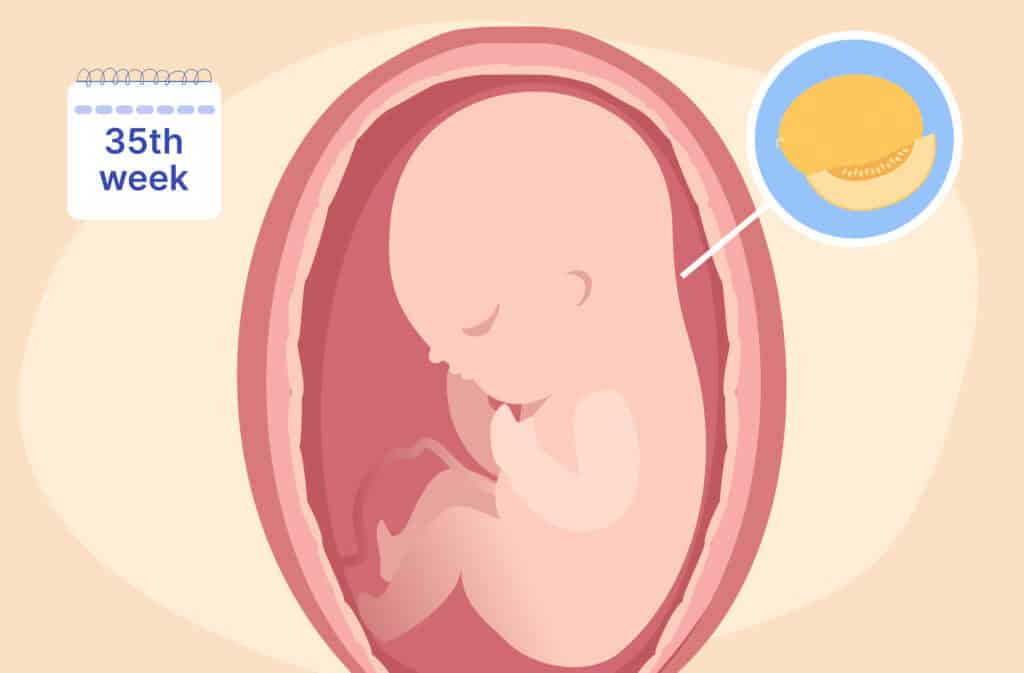
Discover what happens at 35 weeks pregnant, from baby development and symptoms to concerns about sex and breastfeeding benefits.
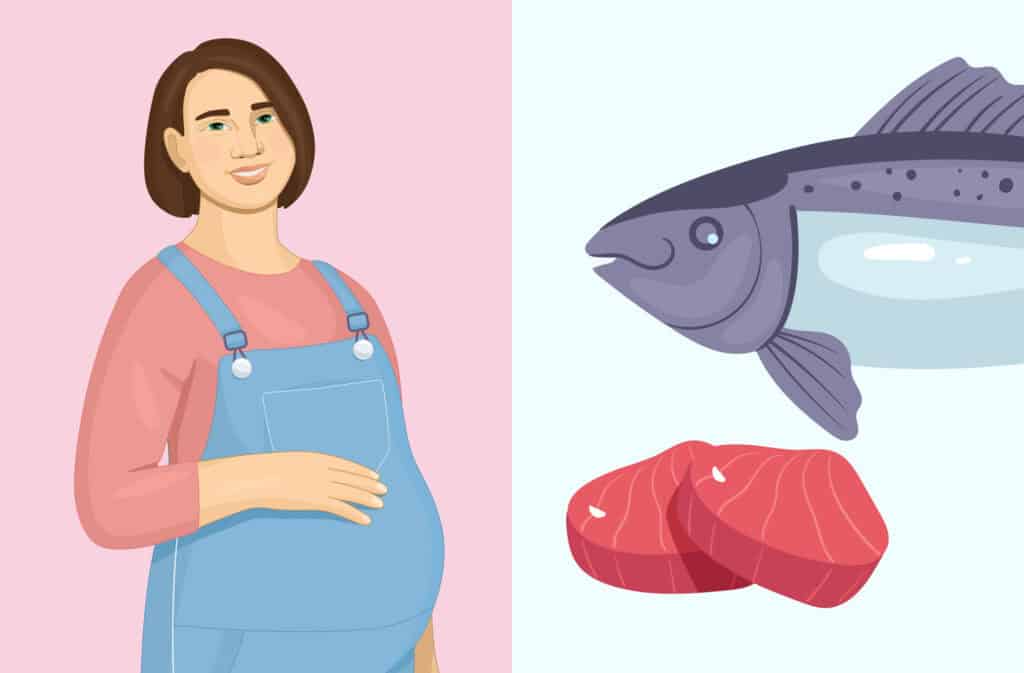
Wondering if pregnant women can eat tuna? Learn about the safety of canned tuna, recommended portions, and what types of tuna to eat during pregnancy.

Can you fly when pregnant? Click for an overview of flight safety during pregnancy, airline policies, and tips to ensure a smooth and safe flight!

